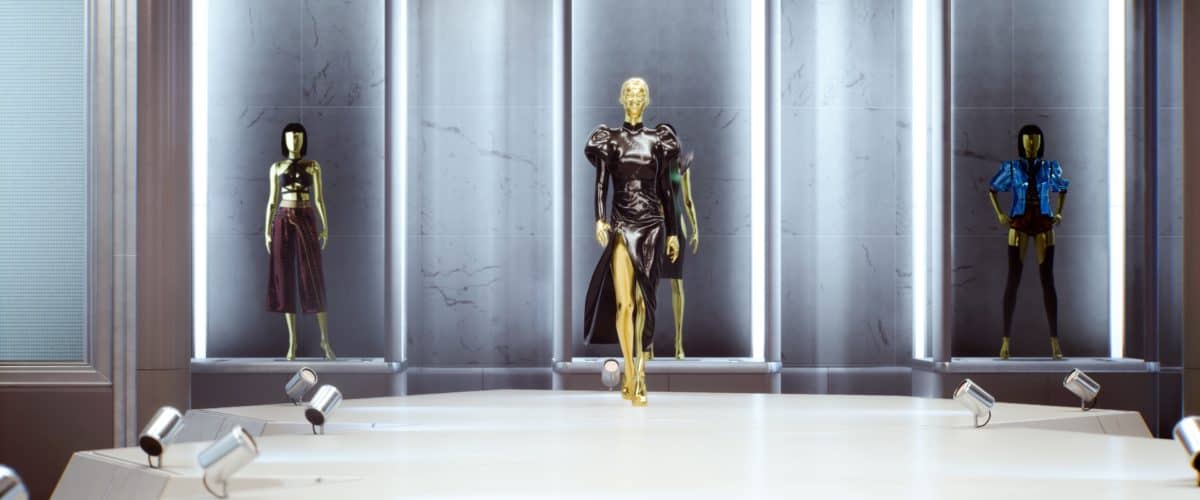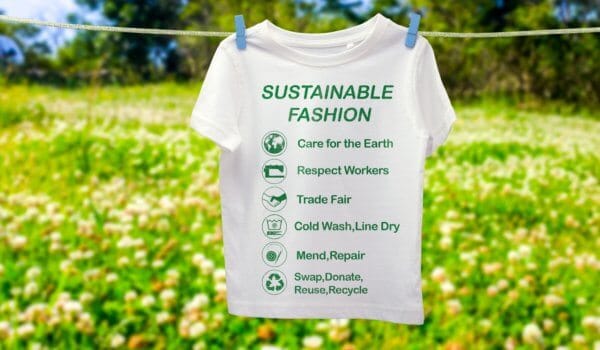The very first Metaverse Fashion Week got everyone talking about the future of digital fashion, NFTs, Web3, and metaverse in the fashion industry. Many believe this will become the new-age solution to the problem of overconsumption in fashion. But is it really the case? What is the real cause of this innovation and is it something we should bet on?
Remember how you would sit in your room for hours playing dress-up games on your computer as a child? The excitement we felt from doing that — having the freedom to create our digital avatars and play around with different styles, getting our computer characters to change their outfits for different occasions. However, things change and people grow up leaving their old interests behind. Or do they? As our generation grew up it seems that we were unable to let that childhood memory rest in peace along with so many other interests and hobbies we had. To prove my point, let’s take a look at metaverse fashion taking over the world and opening new opportunities for fashionistas overall and the fashion industry in general. Fashion houses are now dropping collabs with video game platforms, such as Roblox and Fortnite, by dressing video game characters. However, we might be able to take it even further than that with NFTs, metaverse, and digital fashion.
Fashion Meets Technology

Metaverse fashion is inevitably a mix of two very dissimilar industries — tech and fashion. Up until now, the two were unlikely to cooperate with one another. However, the metaverse seems to have done the impossible. One of its promises was to incorporate fashion, making it intriguing for the fashion industry and customers. The world of virtual dress-up games no longer belongs only on your computer’s screen, while you are sitting in your bedroom dreaming your life away. Today the digital fashion world is expanding and its future looks promising.
The real reason why the fashion world is getting more interested in the possibility of building their metaverse strategy is the fear of losing future customers. It is better to be one of the innovative and leading fashion houses and to try a new realm than to be a conservative one and potentially lose millions in income. It is also a good way for fashion brands to save money. Creating fashion items as NFTs would not require as much work, effort, and labor as real clothes, but profiting off of fashion NFTS can actually end up in enormous revenue.
According to Vogue Business, “metaverse gaming and NFTs could constitute 10 per cent of the market by 2030, marking a €50 billion revenue opportunity and 25 per cent lift to the industry’s profit pool.” Which clearly represents the value that this innovation can potentially bring.
Metaverse & Sustainable Fashion

Ideally, metaverse should help us stop overbuying fashion items and make the industry more sustainable. Just imagine, a few years from now, you will no longer have to buy many garments, you can literally not buy any at all, because everyone will be wearing virtual reality glasses. So you can create any outstanding outfit that you can possibly imagine. And once you are over it, you no longer throw away your fashion items but create new ones. By doing so you are contributing to sustainability. And wasn’t that one of the main demands that we expect from the fashion industry to save our planet?
Unfortunately, no. As digital clothes exist in the form of NFTs, here comes another obstacle. NFTs have a major carbon footprint problem. In other words, NFTs are too hot for this planet, and an ongoing climate change. An advocate for environmental protection and technological advancements Dexter Baño Jr. in his interview with VICE explained that creating every NFT requires 120.7 pounds of CO2, which is equivalent to burning six gallons of gasoline.
The more popular NFT art becomes the more chances of it turning into an ecological disaster. So even though at first sight it might seem that digital fashion is the response to the sustainability issue that the fashion industry is facing today, it might not be as revolutionary and ethical as we thought.
Metaverse Fashion Week

The first Metaverse Fashion Week, which took place in March this year, is the first virtual fashion show that made the industry talk about digital fashion and its future more than any other digital fashion show before. It was organized by Decentraland and attended by 108,000 unique visitors.
There were quite a few big names at this four-day fashion event. Dolce & Gabbana, Etro, Estee Lauder, Tommy Hilfiger, and Elie Saab, to name a few. This digital event got many fashion media outlets writing and talking about it. For example, Vogue’s Luke Leitch wrote a review where he shared his honest and unfiltered opinion. “The experience was often frustratingly glitchy and lag-heavy. Lots of the user comments that ran alongside my clumsy rambles through the platform’s fashion zones backed this up,” Leitch wrote.
Surely, these shortcomings can be forgiven and understood based on the novelty of such events, and the requirement to have special computers to be able to attend such digital fashion events. However, the question stands — how many people would be willing to invest in the special tools for such fashion innovations.
The Future of Metaverse Fashion

So is there a future for metaverse fashion and does it look as bright as some expect it to be? It is hard to predict it and only time can tell. As technology advances so will the fashion world and the trends. The more popular and used the augmented reality glasses will become, the bigger the chances that the digital clothes in the form of the fashion NFTs will be bought and used.
As of now, the whole metaverse fashion movement is still in the early stages of its development and a lot of issues can be overlooked in the name of the progress taking time through trial and error. I guess we can only wait and see whether the digital fashion world will take over the lives of fashion enthusiasts around the world, or will become one of the trends that are long gone and forgotten.
Photo: KDdesignphoto/Shutterstock
You might also like:
Support us!
All your donations will be used to pay the magazine’s journalists and to support the ongoing costs of maintaining the site.
Share this post
Interested in co-operating with us?
We are open to co-operation from writers and businesses alike. You can reach us on our email at [email protected]/[email protected] and we will get back to you as quick as we can.









